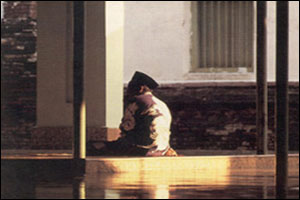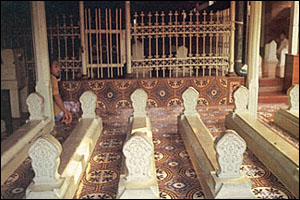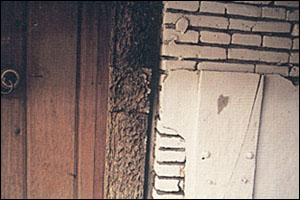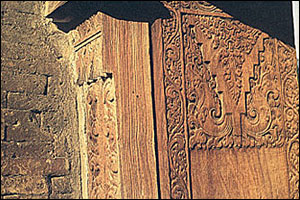|
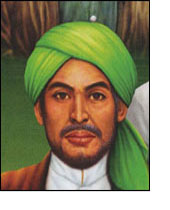 As
an historical figure, Sunan Kudus is difficult
to pin down. An inscription discovered above the mihrab in the
Al Aqsa Mosque in Kudus reveals that the building was founded
in 956 H (A.D. 1549) by Ja'far Shodiq, who is generally identified
with Sunan Kudus. As
an historical figure, Sunan Kudus is difficult
to pin down. An inscription discovered above the mihrab in the
Al Aqsa Mosque in Kudus reveals that the building was founded
in 956 H (A.D. 1549) by Ja'far Shodiq, who is generally identified
with Sunan Kudus.
The
names 'Ja'far Shodiq' and even 'Kudus' itself, however, have puzzled
historians, since the former was the name of an 8th century Persian
Imam (Muslim spiritual leader), and Kudus (Arabic Al Quds = Holy
City) was the ancient name for the city of Jerusalem.
What,
if any, are the connections ? Local Javanese sources state that
Sunan Kudus was a man of great learning, as well as a poet and
philosopher.
The son of Sunan Ngudung of Jipang, he was a great religious teacher and is said further to have commanded the forces of the kingdom of Demak, before founding the city of Kudus sometime in the mid 16th century. Sunan Kudus is believed to have died around the year A.D. 1550.
| |
|
Kudus,
entrance to the famous Mousque, known as Al Aqsa, or Al
Manar, at sunset. According to legend, the founding stone
was brought to Java from Palistinec by Sunan Kudus. |
A
pathway leading to the tomb complex, at 7 a.m. |
|
|
Kudus,
praying in the Mosque |
Easy for visitors
to overlook, a time worn but beautifully carved mythological
animal crouches at the base of one of the original doors
leading into the the tomb complex of Sunan Kudus |
|
|
The tomb
of Sunan Kudus, located behind the Al Aqsa Mosque |
Kudus,
entrance to the famous Mousque, known as Al Aqsa, or Al
Manar, at sunset. According to legend, the founding stone
was brought to Java from Palistinec by Sunan Kudus. |
|
|
| the
fine art of wood carving, for which Kudus is renowned, can
be seen on the gateways, leading to the tomb |
|
|


